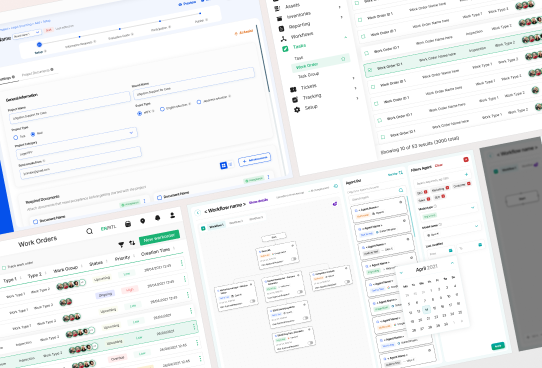Cultural Sensitivity
<p>Cultural sensitivity is the awareness and respect of cultural differences and the ability to effectively interact with people from diverse backgrounds. In today's globalized business environment, cultural sensitivity is crucial for fostering inclusive workplaces and successful international collaborations.</p>
<p>Cultural sensitivity became particularly relevant in the mid-20th century as globalization increased and businesses expanded internationally. The understanding of cultural nuances can significantly impact communication, marketing strategies, and team dynamics.</p>
<h2 id="importance">Importance of Cultural Sensitivity in Product Design</h2>
<p>In product design, cultural sensitivity ensures that products are accessible and appealing to a global audience. It helps designers create user experiences that resonate with diverse cultural groups, thereby expanding market reach and enhancing user satisfaction.</p>
<p>For example, a design that works well in one cultural context may be ineffective or even offensive in another. By incorporating cultural sensitivity, companies can avoid costly mistakes and build stronger connections with their target audience.</p>
<h3 id="components">Components of Cultural Sensitivity</h3>
<p>Cultural sensitivity in product design involves several key components:</p>
<ul>
<li><strong>Research:</strong> Conducting thorough research on the cultural norms, values, and preferences of the target audience. This includes understanding language nuances, symbols, and color meanings.</li>
<li><strong>Inclusive Design:</strong> Ensuring that the design is inclusive and does not alienate any cultural group. This includes considering accessibility features and avoiding stereotypes.</li>
<li><strong>User Testing:</strong> Engaging with a diverse group of users to test the product and gather feedback. This helps identify any cultural issues and areas for improvement.</li>
</ul>
<h3 id="benefits">Benefits of Cultural Sensitivity</h3>
<p>Implementing cultural sensitivity in product design offers several benefits:</p>
<ul>
<li><strong>Enhanced User Experience:</strong> Products that cater to diverse cultural needs are more likely to provide a positive user experience.</li>
<li><strong>Increased Market Reach:</strong> By designing for a global audience, companies can expand their market reach and tap into new customer segments.</li>
<li><strong>Improved Brand Image:</strong> Demonstrating cultural sensitivity can enhance a brand's reputation and build trust with customers.</li>
</ul>
<h3 id="challenges">Challenges in Implementing Cultural Sensitivity</h3>
<p>While cultural sensitivity is important, it also presents challenges:</p>
<ul>
<li><strong>Complexity:</strong> Understanding and addressing the cultural nuances of diverse groups can be complex and time-consuming.</li>
<li><strong>Resource Intensive:</strong> Conducting thorough research and user testing requires significant resources, which may be challenging for smaller companies.</li>
</ul>
<h3 id="overcoming">Overcoming Challenges</h3>
<p>To overcome these challenges, companies can adopt the following strategies:</p>
<ul>
<li><strong>Leverage Cultural Experts:</strong> Collaborate with cultural experts or consultants who can provide valuable insights and guidance.</li>
<li><strong>Use Technology:</strong> Utilize tools and platforms that facilitate cultural research and user testing. For example, [UserTesting](https://www.usertesting.com/), [Ethnio](https://ethn.io/), and [Lookback](https://www.lookback.io/) can help gather feedback from diverse user groups.</li>
</ul>
<h2 id="case-studies">Case Studies in Climate Tech</h2>
<p>In the climate tech industry, cultural sensitivity plays a crucial role in designing solutions that resonate with diverse communities. For instance, a carbon footprint calculator designed for users in the United States might emphasize vehicle emissions, while one for users in India might focus more on agricultural practices.</p>
<p>Another example is the design of educational apps aimed at promoting sustainable agricultural practices. In regions with different farming traditions, the content and presentation need to be culturally relevant to be effective. Case studies from companies like [Cool Farm Tool](https://coolfarmtool.org/) and [Taru Leading Edge](http://www.taru.co.in/) demonstrate the successful integration of cultural sensitivity in climate tech solutions.</p>
<h2 id="conclusion">Conclusion</h2>
<p>In summary, cultural sensitivity is a critical aspect of product design that facilitates the creation of inclusive and globally appealing products. By prioritizing cultural sensitivity, companies can enhance user experience, expand their market reach, and improve their brand image. While there are challenges, leveraging cultural experts and technology can help overcome these obstacles, ensuring successful implementation.</p> <p>If you’re looking for inspiration to elevate customer and user experience for enterprise-grade products, View our work with the Ministry of Health of Saudi Arabia for curating the UX of an <a href="https://www.whatifdesign.co/work/enterprise-software-for-hospitals" style="color:#2896FF; text-decoration:underline;">Asset Management Tracking Platform</a></p>
<p>Ready to get started? <a href="https://cal.com/akhilak/what-if-design?duration=30" style="color:#2896FF; text-decoration:underline;">Book a 1:1 consultation call</a> with us today.</p>

Let's scale your impact with great design.
Free consultation, no sales pitch
Thank you! Your submission has been received!
Enter you email correctly!
Let’s talk
Nothing great is built alone.
Let’s connect about your vision, our work and how we can collaborate.
Get in touch
© 2025 What if Design
Stripe climate partner

